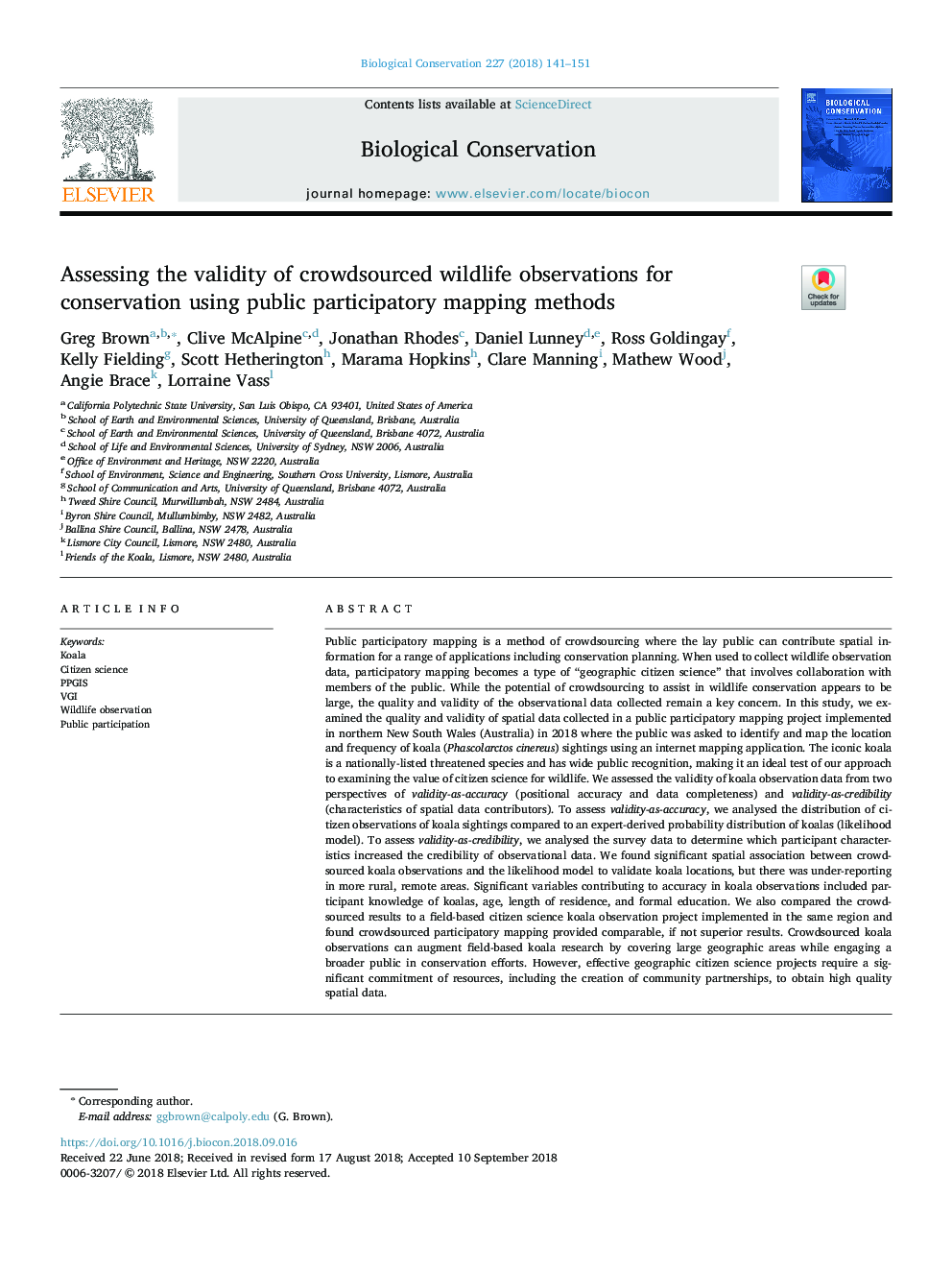| کد مقاله | کد نشریه | سال انتشار | مقاله انگلیسی | نسخه تمام متن |
|---|---|---|---|---|
| 10144316 | 1646299 | 2018 | 11 صفحه PDF | دانلود رایگان |
عنوان انگلیسی مقاله ISI
Assessing the validity of crowdsourced wildlife observations for conservation using public participatory mapping methods
ترجمه فارسی عنوان
ارزیابی اعتبار مشاهدات حیات وحش پر جمعیت برای حفاظت با استفاده از روش های نقشه برداری عمومی مشارکتی
دانلود مقاله + سفارش ترجمه
دانلود مقاله ISI انگلیسی
رایگان برای ایرانیان
موضوعات مرتبط
علوم زیستی و بیوفناوری
علوم کشاورزی و بیولوژیک
بوم شناسی، تکامل، رفتار و سامانه شناسی
چکیده انگلیسی
Public participatory mapping is a method of crowdsourcing where the lay public can contribute spatial information for a range of applications including conservation planning. When used to collect wildlife observation data, participatory mapping becomes a type of “geographic citizen science” that involves collaboration with members of the public. While the potential of crowdsourcing to assist in wildlife conservation appears to be large, the quality and validity of the observational data collected remain a key concern. In this study, we examined the quality and validity of spatial data collected in a public participatory mapping project implemented in northern New South Wales (Australia) in 2018 where the public was asked to identify and map the location and frequency of koala (Phascolarctos cinereus) sightings using an internet mapping application. The iconic koala is a nationally-listed threatened species and has wide public recognition, making it an ideal test of our approach to examining the value of citizen science for wildlife. We assessed the validity of koala observation data from two perspectives of validity-as-accuracy (positional accuracy and data completeness) and validity-as-credibility (characteristics of spatial data contributors). To assess validity-as-accuracy, we analysed the distribution of citizen observations of koala sightings compared to an expert-derived probability distribution of koalas (likelihood model). To assess validity-as-credibility, we analysed the survey data to determine which participant characteristics increased the credibility of observational data. We found significant spatial association between crowdsourced koala observations and the likelihood model to validate koala locations, but there was under-reporting in more rural, remote areas. Significant variables contributing to accuracy in koala observations included participant knowledge of koalas, age, length of residence, and formal education. We also compared the crowdsourced results to a field-based citizen science koala observation project implemented in the same region and found crowdsourced participatory mapping provided comparable, if not superior results. Crowdsourced koala observations can augment field-based koala research by covering large geographic areas while engaging a broader public in conservation efforts. However, effective geographic citizen science projects require a significant commitment of resources, including the creation of community partnerships, to obtain high quality spatial data.
ناشر
Database: Elsevier - ScienceDirect (ساینس دایرکت)
Journal: Biological Conservation - Volume 227, November 2018, Pages 141-151
Journal: Biological Conservation - Volume 227, November 2018, Pages 141-151
نویسندگان
Greg Brown, Clive McAlpine, Jonathan Rhodes, Daniel Lunney, Ross Goldingay, Kelly Fielding, Scott Hetherington, Marama Hopkins, Clare Manning, Mathew Wood, Angie Brace, Lorraine Vass,
